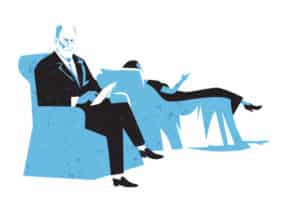What Is the Subconscious Mind?

Explaining the subconscious can be challenging. The greatest minds of previous generations, like Sigmund Freud and Carl Jung, spent much of their careers trying to wrap their heads around the difference between the conscious mind and the subconscious mind.
Even today, you’ll run across psychiatrists who insist on dubbing it the “unconscious mind” and who take a more limited view of the concept as it applies to therapeutically beneficial disciplines.
But the truth is that the subconscious mind is real, it is vast, and more importantly, it is under our control.
The Birth of the Subconscious
The subconscious has always been with us—the human mind cannot function without it. But how did our understanding of the subconscious come about?
The word “subconscious” is an anglicization of the French word “subconscient,” as coined by the psychologist Pierre Janet. Janet theorized that underneath the layers of critical components and functions of the conscious mind lay a powerful awareness that he described as the subconscious mind.
 Freud first used the term in 1893 to describe associations and impulses that are not accessible to consciousness, while Jung argued that—because there is a limit to what is held in conscious focal awareness—there must be an alternative storehouse of one’s knowledge and experience.
Freud first used the term in 1893 to describe associations and impulses that are not accessible to consciousness, while Jung argued that—because there is a limit to what is held in conscious focal awareness—there must be an alternative storehouse of one’s knowledge and experience.
In other words, the subconscious refers to both mental processing that occurs below awareness and content that resides below conscious awareness but that is capable of becoming conscious again. This back-and-forth between subconscious and conscious awareness is why a person under hypnosis can often recall events from years ago with perfect clarity, even if they don’t consciously retain that knowledge from day to day.
But what does the subconscious do for the human body?
What the Subconscious Does for People
First of all, the subconscious mind and the functions it controls—such as breathing, digestion, body temperature and the nervous system—keeps us alive.
Through your autonomic nervous system, the subconscious maintains equilibrium among the hundreds of chemicals in your body. This keeps your engine running and your bodily functions in harmony.
The function of the subconscious mind, other than the autonomic functions mentioned above, is to store and retrieve data. The best analogy for all the other functions that the subconscious serves is to imagine it as a vast memory bank. The subconscious mind stores all of your previous life experiences, memories, skills, your beliefs about the world and your sense of self. Its capacity is virtually unlimited and it permanently stores everything that has ever happened to you.
Hypnosis is an effective therapeutic strategy because it taps into the subconscious. It isn’t triggering a conscious memory that you carry with you on a day-to-day basis. Rather, hypnosis speaks directly to the subconscious, which can absorb or elevate memories as they are needed.
Underneath all that raising and absorbing of memories, your subconscious is working day and night to maintain a balance. And that balance is there to establish a pattern of behavior and response to stimuli that is consistent with your emotionalized thoughts, hopes and desires. It’s a kind of homeostasis that keeps you thinking and acting in a manner consistent with what you have done and said in the past.
We should note here that your subconscious mind is subjective. It does not think or reason independently; it merely obeys the commands that it receives from your conscious mind.
The conscious mind is responsible for logic, calculations, and decisions—all forms of action that you perform while you are awake and conscious. And during hypnotic intervention, the subconscious mind is particularly open to suggestion.
Here’s the rub: because your subconscious works so hard to maintain the pattern of behaviors that it has come to establish as your “normal” behavior, unhealthy habits can be very hard to break without outside intervention. Your subconscious mind causes you to feel emotionally and physically uncomfortable when you attempt to change those established patterns of behavior.
One reason disciplines like yoga, hypnosis and cognitive-behavioral therapy work as psychological interventions is in part because they speak directly to the subconscious.
The good news is that when you learn to purposefully create new patterns that are fully absorbed by the subconscious, you can harness the power of habit and suggestion to instill new comfort zones to which your subconscious mind will adapt.

The Path to Change Runs Through the Subconscious
There are lots of metaphors for the subconscious mind: the submerged part of an iceberg, the bank in which we deposit memories, and the “engine” that keeps our bodies running.
The subconscious uses emotions, memories, core values and beliefs as filters to sift through an otherwise incomprehensible amount of external and internal stimuli, and it condenses that information to a size that you can internalize and make sense of. What you perceive as “reality” is the result of all those factors.
The subconscious is also the source of creativity, intuition, inspiration, inner acceptance, interconnectedness and what eastern religions call “enlightenment.” And, just like your body has defenses against physical injuries, your subconscious provides defenses against emotional shocks and injuries.
The conscious and the subconscious mind make a great team when you learn to use them together. The conscious mind efficiently handles tasks and engagements before sending them off the subconscious to put away, while the subconscious can offer feedback and messages about the task in the form of emotions delivered to the conscious mind.
By learning how to make the best use of these two states of consciousness, you can improve skills, absorb healthy suggestions, and have much more control over your emotions.
